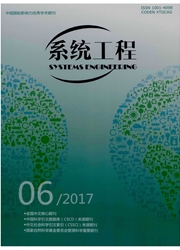

 中文摘要:
中文摘要:
将经济生产过程中的自然资源消耗与环境污染排放视为"环境压力",结合DEA理论与视窗分析法,实证测算2004~2012年长江经济带11个省市的5类生态效率指标值,并以此为基础考虑生态效率的地区差异与变化趋势,采用σ收敛与绝对β收敛两种收敛分析方法检验生态效率的敛散性。结果表明:样本期内长江经济带的生态效率整体水平依然偏低,且出现下降态势,资源节约与污染减排还存在很大的空间;不同省市与地区生态效率的差异特征较为明显;无论是长江经济带整体还是上游、中游与下游三大地区,内部省市生态效率之间的差距都有进一步扩大的趋势。
 英文摘要:
英文摘要:
Considering the natural resource consumption and pollutant reduction in the production process as environmental pressure,this paper utilizes DEA technique and window analysis to measure five eco-efficiency indicators of Yangtze River Economic Zone’s 11 provinces over the period of 2004-2012,on basis of which eco-efficiency’s regional differences and evolution trends are analyzed,σconvergence and absoluteβconvergence analysis are used for discussing the characteristic of convergence and divergence of eco-efficiency.Empirical analysis shows that the overall Yangtze River Economic Zone’s eco-efficiency is still low and presents a downward trend over the period 2004-2012,regional differences are remarkable and has great potential of resource saving and pollution reduction,and the eco-efficiency gaps among provinces from overall Yangtze River Economic Zone’s and the upper,middle or lower reaches all have the tendency of getting larger in the future.
 同期刊论文项目
同期刊论文项目
 同项目期刊论文
同项目期刊论文
 期刊信息
期刊信息
